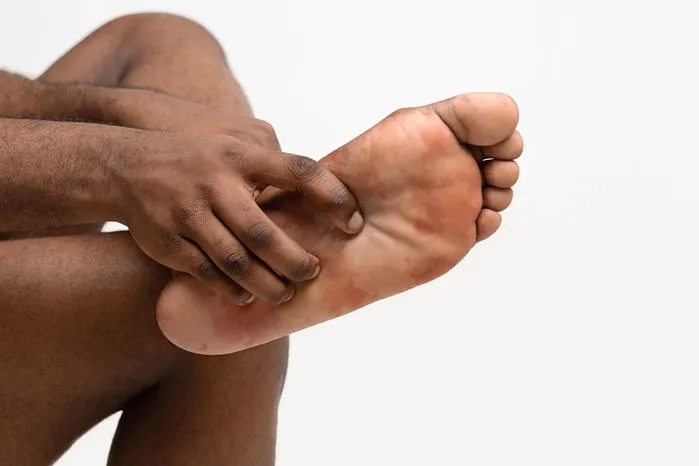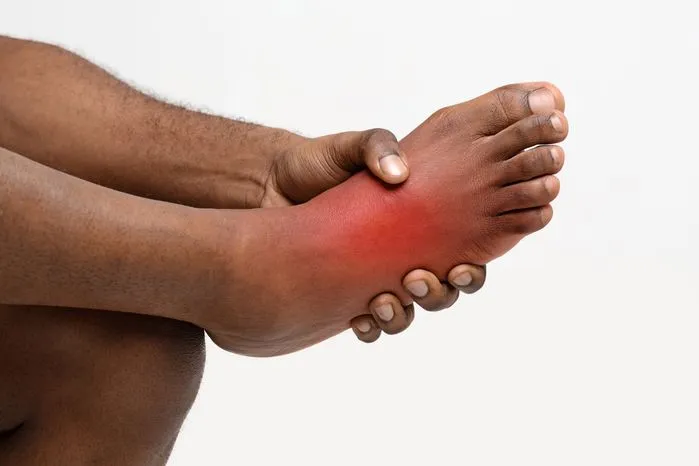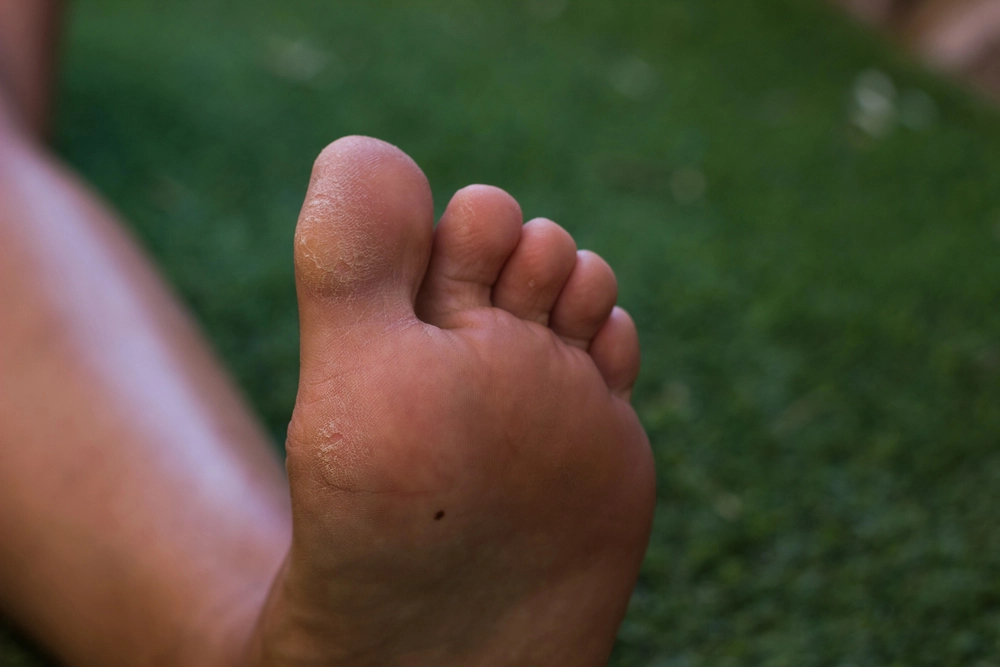
Persistent pain in the ball of your foot isn’t just uncomfortable—it could be a sign of metatarsalgia, a condition we’ve seen misdiagnosed or overlooked in countless patients at the Releford Institute. Based on decades of treating complex foot disorders, our medical experts created this visual guide to help you recognize what’s happening beneath the surface.
Top 5 Takeaways
- It is often missed.
Many patients are misdiagnosed. Early detection makes recovery easier. - Shoes matter.
Wear wide-toe boxes and good arch support. Use orthotics or padding if needed. - Achieve clarity about the condition.
Getting a better view helps you see what’s going on. - Know the signs.
Pain, burning, or feeling like a pebble in your shoe? Don’t ignore it. - This guide is expert-backed.
Straight from the medical team—no fluff, just facts and next steps.
Understanding Metatarsalgia: A Brief Overview
An unexpected piercing, throbbing, or scorching sensation in the foot's ball region, situated just behind your toes, might be your first introduction to metatarsalgia. Noticing this foot discomfort might be unsettling, yet it's an important indicator that our feet, which carry our daily activity load, need care.
Stemming from the metatarsal foot bones and 'algos', a Greek term meaning pain, it manifests as pain or inflammation in the foot's ball. Athletes or those involved in high-impact activities often experience this condition. However, anyone can suffer, especially individuals wearing inappropriate or high-heeled footwear.
Its Common Causes
Preventing the condition involves understanding its common causes. Often, this condition arises due to overuse or high stress on the foot's metatarsal bones, situated between your arch and toes.
Inappropriate footwear stands as one common cause. High-heeled shoes or tight-fitting ones exert extra pressure on metatarsals, causing pain and inflammation eventually. Athletes wearing unsuitable shoes or lacking proper arch support can experience this condition as well.
Weight distribution also plays an integral role, influenced by obesity, foot abnormalities, or a sudden spike in physical activity. Any of these factors can cause uneven foot pressure, leading to this condition.
Identifying Symptoms
Manifestations of discomfort linked to the condition vary, encompassing everything from a mild ache to a sharp, burning sting in the foot's ball. You might also experience sensations similar to having a pebble in your shoe or a folded sock beneath your foot. Such symptoms usually intensify with prolonged standing, walking, or running, particularly on hard surfaces without footwear, then diminish when feet are off the ground.
Medical professionals typically search for tender areas, calluses, and indicators of abnormal foot mechanics. Motion range tests are conducted, and your gait is observed for irregularities.
Visualizing This Foot Condition
Diagnostic visuals help illustrate the metatarsal bones with surrounding soft tissues. In this area, you find strain, inflammation--pain associated with it.
Images not only assist in diagnosis but also inform treatment choices. Examining these visuals, doctors can gauge condition severity, crafting a patient-specific treatment strategy. During the healing phase, these same images serve to track the foot's recovery, offering a chance to tweak the treatment plan, if warranted.
Preventive Measures and Treatment Options
We recommend shoes with wide, high-toe boxes and excellent arch support to alleviate discomfort. These features allow for toe movement while evenly distributing body weight. Orthotic devices or padding can provide additional relief.
You can also rely on physical therapy as an effective treatment method. This approach aims to strengthen foot muscles controlling toe movements, thereby relieving metatarsal pressure.
For more severe manifestations, treatments not involving surgery might include anti-inflammatory medications or applications of ice. However, if discomfort continues despite these attempts, you might need to consider surgical intervention as the next course of action.
“We’ve seen too many patients suffer for years with misdiagnosed foot pain, only to find relief once they finally get a clear picture of what’s going on. That’s why we created this guide. Drawing from over 30 years of clinical experience treating thousands of complex foot cases, we know that visual learning—when paired with early recognition of symptoms—can change lives. At the Releford Institute, we don't just treat metatarsalgia; we help patients finally understand it.”
Supporting Facts and Statistics
1. Footwear & High-Impact Activity
- Tight or unsupportive shoes are a leading trigger.
- Running and jumping increase pressure on the metatarsals.
- We often see this in athletes and professionals.
Backed by mayoclinic.org
2. Hidden Structural Imbalances
- High arches or a longer second toe shift pressure forward.
- These issues often go unnoticed until symptoms worsen.
- Imaging at our institute regularly reveals these causes.
Supported by my.clevelandclinic.org
3. Work-Related Foot Stress
- In 2018, 30% of all work-related injury absences were due to musculoskeletal disorders (MSDs).
- Many involve lower limbs, including the forefoot.
- We see this often in retail, healthcare, and factory workers.
Source: bls.gov
Summary:
Metatarsalgia is rarely caused by one issue alone. At the Releford Institute, we blend national research with real-world experience to diagnose and treat the root causes, whether it's footwear.
Final Thoughts & Opinion
This condition is more common—and more often misdiagnosed—than most people realize. We've treated countless patients who suffered in silence due to vague diagnoses or incomplete information.
What We've Learned Firsthand:
- Foot pain is often dismissed until it disrupts daily life. That’s a mistake.
- Early detection matters. The sooner it is recognized, the easier it is to manage.
- Many patients improve simply by correcting their shoes.
- Visual understanding empowers patients. Real clinical images help patients connect symptoms to causes with clarity.
Why We Created This Guide:
- To clarify the confusion, Generic advice doesn’t cut it—we provide expert context with real photos.
- To help you take action. From prevention tips to advanced treatment paths, it’s all here.
Frequently Asked Questions
1. What is metatarsalgia, and where does it cause pain?
Metatarsalgia refers to pain and inflammation in the ball of the foot, typically beneath the metatarsal heads. It’s often described as a burning, sharp, or aching sensation just behind the toes, especially during walking or standing.
2. What are the most common causes of metatarsalgia?
According to Releford Institute experts, common causes include:
- Excessive pressure from high-impact sports or prolonged standing
- Foot deformities (like bunions or hammertoes)
- Improper footwear (high heels or unsupportive shoes)
- Overpronation or high arches
- Morton’s neuroma or arthritis
3. What are the visual symptoms of metatarsalgia I should look for?
While some symptoms are felt rather than seen, you may notice:
- Redness or mild swelling at the ball of the foot
- Calluses or corns near the painful site
- Footpad flattening or arch collapse in chronic cases (refer to the image diagrams provided by The Releford Institute’s visual guide)
4. How does metatarsalgia feel when walking?
Most patients describe it as walking on a pebble or feeling a bruise under the foot. The pain usually intensifies with movement and decreases with rest.
5. Is metatarsalgia the same as Morton’s neuroma?
No, but they can coexist. Morton’s neuroma is a nerve-related condition that causes sharp, shooting pain between the toes, while metatarsalgia is more pressure-related pain in the metatarsal region.
6. How is metatarsalgia diagnosed?
The Releford Institute team typically conducts:
- A physical exam
- Foot X-rays or ultrasound imaging
- Gait analysis
- Sometimes an MRI is used to rule out stress fractures or neuromas
7. Can metatarsalgia cause toe numbness or tingling?
Yes. If nerves are compressed due to inflammation or improper foot mechanics, numbness, tingling, or burning sensations may accompany the pressure pain.
8. What types of shoes can worsen metatarsalgia?
Shoes with thin soles, high heels, narrow toe boxes, or no arch support can aggravate the condition by increasing forefoot pressure.
9. What are the best treatment options for metatarsalgia?
Treatment may include:
- Rest and ice therapy
- Custom orthotics or metatarsal pads
- Anti-inflammatory medications
- Physical therapy or footwear changes
- In severe cases, corticosteroid injections or surgery
10. How long does it take for metatarsalgia to heal?
Recovery varies, but mild to moderate cases often resolve within a few weeks with proper care. Chronic or severe cases may take 2–3 months or longer.
11. Can I still exercise with metatarsalgia?
Yes, but low-impact exercises like swimming or cycling are recommended. Avoid running or jumping until pain subsides, and always wear cushioned, supportive footwear.
12. Are there visual guides or pictures to help identify metatarsalgia?
Absolutely. The Releford Institute offers a complete visual guide with labeled foot diagrams, symptom photos, and anatomical illustrations to help patients better understand and identify the condition.


















